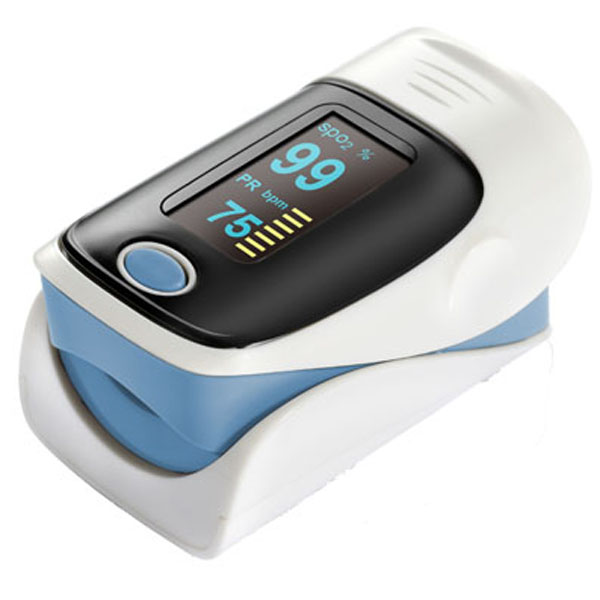Introduction to Pulse Oximeters: Understanding the Basics
Pulse oximeters are vital medical devices that have transformed how we monitor blood oxygen levels. These devices, whether used in professional healthcare settings or at home, provide invaluable data on oxygen saturation (SpO2) levels in the blood. At the core of a pulse oximeter is the ability to emit infrared light that passes through the skin, usually via a clip attached to the fingertip, earlobe, or toe. The device then calculates the percentage of oxygenated hemoglobin in the blood, displaying the result on a digital screen. With technological advancements, custom pulse oximeters and those provided by various pulse oximeter manufacturers, including ODM and OEM options, have become widely accessible, offering both precision and reliability.
Why Use a Pulse Oximeter: Key Benefits Explained
The primary function of a pulse oximeter is the accurate monitoring of oxygen levels, crucial for individuals with respiratory or cardiac conditions. By using a pulse oximeter, individuals can track changes in their health and detect early signs of deterioration. Numerous pulse oximeter suppliers have introduced wholesale pulse oximeter models that are suitable for home care, enabling continuous monitoring and providing peace of mind. For those managing chronic conditions like COPD or asthma, regular checks can furnish critical data that assist in refining treatment plans and ensuring timely medical intervention.
Choosing the Right Pulse Oximeter: Essential Considerations
Selecting the right pulse oximeter involves several factors, including the choice between medical-grade and over-the-counter devices. Medical-grade pulse oximeters often offer higher accuracy and reliability, suitable for clinical environments. However, OEM pulse oximeters and ODM pulse oximeters available from pulse oximeter manufacturers and factories offer customized solutions for specific needs. When purchasing a device, consider the display clarity, battery life, and ease of use. Consulting healthcare providers can provide additional guidance on the best model tailored to individual health requirements.
Step-by-Step Guide: Using a Pulse Oximeter Correctly
To ensure accurate readings, it is crucial to follow a structured approach when using a pulse oximeter. Begin by turning on the device and ensuring your hand is relaxed and warm. If using a fingertip pulse oximeter, clip it onto a clean, polish-free, and artificial-nail-free finger. The sensor should be positioned with the nail facing upward, below heart level. Remain still to prevent erroneous data due to movement. After a few seconds, the device will display a stable SpO2 number. Many users favor custom pulse oximeters for their personalized features, enhancing usability and data accuracy.
Interpreting Pulse Oximeter Readings: What the Numbers Mean
Pulse oximeter readings are expressed as a percentage, with normal SpO2 levels typically ranging between 95% and 100%. A reading below this range may indicate hypoxemia, warranting further medical evaluation. Different conditions can alter normal thresholds; for instance, those with chronic lung diseases might naturally present lower numbers. It is paramount to discuss your personal normal SpO2 range with a healthcare professional and utilize this data in conjunction with symptoms to manage health effectively.
Factors Affecting Readings: Avoiding Common Pitfalls
Several factors can affect the accuracy of pulse oximeter readings. Nail polish, artificial nails, and skin pigmentation can impede the sensor's ability to measure correctly. Cold extremities can also influence results by reducing blood flow. Pulse oximeter manufacturers are continually innovating to reduce such discrepancies, yet understanding these limitations is essential. Users should aim to conduct readings in warm conditions and ensure the device is properly positioned for optimal results.
Troubleshooting Tips: Addressing Common Issues
Occasionally, users may encounter issues with their pulse oximeter, such as erratic readings or device malfunctions. If such problems arise, ensure the device's batteries are charged and that the sensor area is clean and unobstructed. Adjusting the device's position and verifying that fingers are warm can improve performance. For persistent issues, consult the device manual or reach out to the manufacturer, preferably one like Leis, renowned for comprehensive customer service and support.
Health Monitoring: Watching for Symptoms Alongside Readings
While pulse oximeters provide valuable quantitative data, qualitative observation of symptoms such as fatigue, weakness, or shortness of breath remains critical. Combining these observations with regular SpO2 monitoring forms a holistic approach to health management. Recording daily readings can help detect trends and make informed decisions about medical care.
When to Seek Medical Help: Understanding Warning Signs
It is vital to understand when a reading signifies the need for medical help. An SpO2 reading consistently below 95%, especially if accompanied by worrisome symptoms, should prompt contact with healthcare professionals. Personalized thresholds might differ; thus, individuals should work closely with their doctors to identify specific warning signs and action plans.
Conclusion and Recommendations: Staying Informed and Prepared
In conclusion, pulse oximeters are indispensable tools in today's healthcare landscape. They empower individuals to take charge of their health by providing real-time insight into their body’s oxygen status. Whether opting for an OEM pulse oximeter or a wholesale pulse oximeter from a reputable pulse oximeter factory, users must prioritize accuracy and device quality. Staying informed about device usage, potential inaccuracies, and symptom monitoring ensures optimal health management.
● About Leis
Leis is a leading medical supplier dedicated to the research, design, manufacture, and marketing of high-quality medical devices. With a focus on innovation and customer satisfaction, Leis offers an extensive product line, including pulse oximeters, designed to meet the needs of families and healthcare providers. Committed to quality, our devices comply with ISO13485, CE, and NMPA standards. Trust Leis for reliable medical instruments and exceptional service.

